Popular games for collection Magical Drop
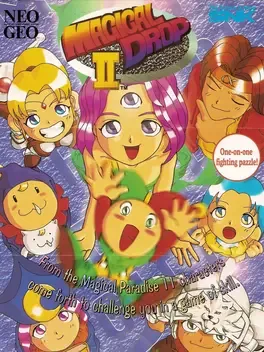
Magical Drop is played in a style and gameplay similar to Compile's (now Sega's) Puyo Puyo and Taito's Puzzle Bobble franchises; a "stack" of random colored bubbles descend from the top, and a player is defeated when a bubble hits the bottom. Bubbles can be picked up and dropped by the player's "clown" at the bottom, and are destroyed when three or more of the same color are put together on a single column. "Chains" are formed either when a single drop caused a chain reaction, or when more than one group of bubbles is destroyed in quick succession. The game is normally played with two players (one may be a computer opponent), and chains cause the opponent's stack to descend faster. There are 24 characters, all but the Black Pierrot being named after a tarot card (although the Strength card has been represented by two characters throughout the series). Different characters have different attack patterns. The columns of the opponent's stack will descend at different rates relative to each other depending on the character chosen. This causes a disjunction of colors that may make it more difficult for the other player to clear their stack. For example, with the character Devil, all the columns will descend at the same rate, whereas with Sun, the middle columns will descend faster than the others.
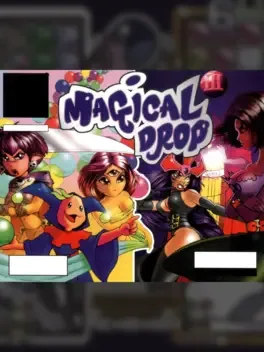
Released in Japan as "Magical Drop III + Wonderful" and in Europe simply as "Magical Drop III", this version packages Magical Drop III: Yokubari Tokudaigou! with a console port of Magical Drop Plus 1! The game features a slightly slower gameplay pace than the Japanese version, omits the "Arcade" version and gallery from the Japanese release, and translates the game's script into multiple languages. Unlike previous versions released outside of Japan, this game retains the Japanese voice work; similarly, the port of Magical Drop Plus 1! is based on the Japanese version instead of Chain Reaction.
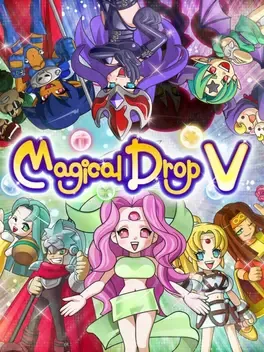
Magical Drop Is Back!!! Yes, the cult-classic returns with all the fast-paced action you expect from the franchise, mixed with modern visuals and multi-player online experiences. The sixth Magical Drop game was developed by French independent studio Golgoth and published by UTV Ignition for Steam in 2012. Xbox Live Arcade and PlayStation Network ports were announced, but ultimately never materialized. The game features a much smaller selection of characters, omits items, and removes Puzzle Mode; however, it adds new online gameplay modes. Characters from the cancelled Data East puzzle game Ghostlop are introduced; these three characters use Ghostlop gameplay instead of traditional Magical Drop mechanics.
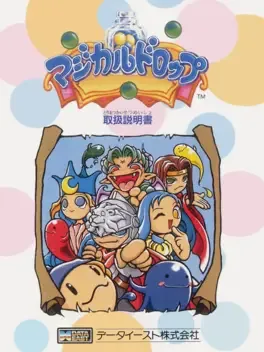
Magical Drop is a 1995 competitive arcade puzzle game created by Data East Corporation. It is the inaugural game of the Magical Drop series. Magical Drop is based on a game called Drop-Drop created by Russ Ltd, a Russian company. The arcade game received an updated version named Magical Drop Plus 1! that features aesthetic improvements and also introduces a "Solo Play" mode. Magical Drop Plus 1! was released in North America and Europe as Chain Reaction; in this version, the puzzle pieces are changed from spherical Drops to various items (such as food or celestial bodies) and the character-unique voice acting is replaced by a single male narrator. All versions of the original arcade game were developed for Data East's "MLC" arcade hardware.
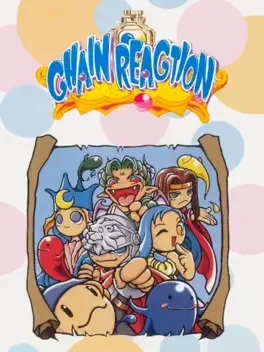
The arcade game "Magical Drop" received an updated version named "Magical Drop Plus 1!" that features aesthetic improvements and also introduces a "Solo Play" mode. Magical Drop Plus 1! was released in North America and Europe as "Chain Reaction"; in this version, the puzzle pieces are changed from spherical Drops to various items (such as food or celestial bodies) and the character-unique voice acting is replaced by a single male narrator. All versions of the original arcade game were developed for Data East's "MLC" arcade hardware. The game includes two game modes: the one-player score-based Solo Play (where additional lines of tiles regularly drop from the top of the screen) and two-player competitive Battle Mode (where the second player can be human or CPU opponents). Similar to Tetris Attack, players can make "chain reactions" by quickly creating near-simultaneous matches to either boost their score (in Solo Play) or fill up more of their opponent's playfield (in Battle Mode). Magical Drop was ported to the Super Famicom, which includes a puzzle mode that challenges players to solve preset puzzles given a limited number of possible moves. The game was re-imagined for the Sony PlayStation and Sega Saturn with different, pre-rendered characters. The Sega Saturn port was going to be released in America by Koei, and appeared at E3 1997, however the American release was cancelled. Finally, a port of the game is part of Magical Drop III + Wonderful; this includes the PAL version of III + Wonderful, which retains the Magical Drop Plus 1! name as opposed to using Chain Reaction.
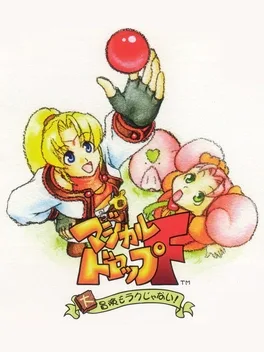
Magical Drop F - Daibouken Mo Rakujyanai! is the fourth main Magical Drop game. It was released exclusively for the Sony PlayStation on October 21, 1999. Magical Drop F includes character-specific items that have various effects when activated.
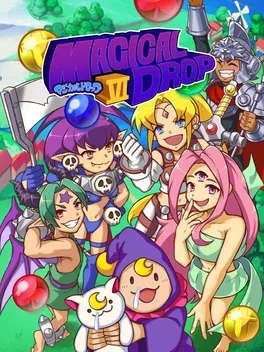
The legendary Japanese arcade game is back! Choose your favorite character—will it be World, the Overseer of the Magical Land, the mighty Justice, or the devious Black Pierrot?—and play in one of the numerous game modes available. Solve diabolical puzzles or beat strong opponents in Arcade match. Follow an adventure in Story or Path of Destiny modes, full of twists and turns. Challenge your friends and the best players online!
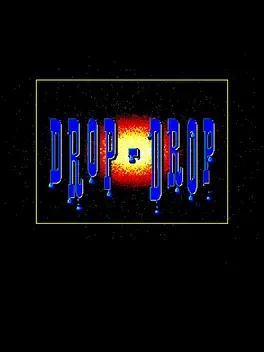
Drop-Drop is a puzzle arcade game, probably inspired by Tetris and Columns. There is a rectangular playfield. Various blocks appear slowly from the top. If one of the columns would reach the bottom, the game is over. The player has a cursor at the bottom which can be used to select a particular column, pull blocks into that cursor the bottom, move the cursor to a different column and push the blocks back to the top. Multiple blocks can be moved at once, but they have to be the same type. As soon as the column of at least 5 blocks of the same type gathers together, this group annihilates, freeing up space on the playfield, thus making it possible to continue the game. Drop-Drop was initially developed and published in Russia; the only known names attached to the project are programmers Vladimir Ryshov and Grigory Sragovich. The game was included in the Moscow Nights game compilation, which released in (at the very least) the United Kingdom and Germany. Data East learned of Moscow Knights and obtained a license for Drop-Drop, using it as the basis of what would eventually be known as Magical Drop. Both the first Magical Drop and Magical Drop II state that the gameplay was licensed from Russ Ltd, and Japanese materials for the first Magical Drop and its ports play up the game's status as a Russian puzzle game. At some point, Data East would purchase the full rights to the game from Russ; this is likely the reason why Russ is not credited in Magical Drop III or beyond.
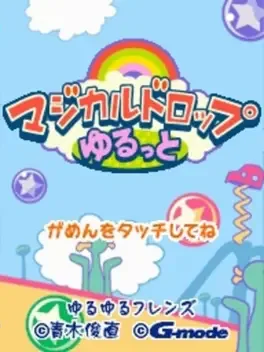
A downloadable Magical Drop for DSi, released only in Japan. "Magical Drop Yuruto" is a game that has two modes: "Magical Drop", which erases colorful drops coming down from above side by side, and "Yuruyuru Yuruto", which allows you to fortune-telling with tarot cards. With the cute characters of "Yuruyuru Friends" designed by Toshinao Aoki, you can play with the magical drop of comfortable operation with the touch pen, and have the tarot card "loosely" fortune.
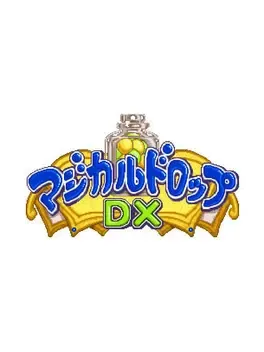
Magical Drop DX is a mobile game released exclusively for Japanese mobile phones by G-Mode. It is based on Magical Drop II with elements from Magical Drop, more particularly, their Super Famicom ports (most notably the title screen and the background used for the 1P vs. CPU mode). As part of G-Mode's initiative to preserve their feature phone games from the 2000s, the original version of Magical Drop DX was ported to the Nintendo Switch as the 19th game in their G-Mode Archive series.
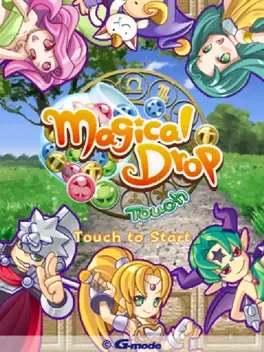
Magical Drop Touch is a Magical Drop spinoff, released for the iPhone and Android on October 20, 2009. Its release marked the end of a nine-year hiatus following the release of the Game Boy Color Magical Drop.
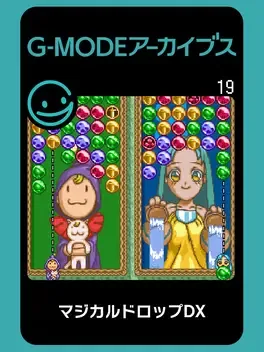
Take, throw, and connect the colorful drops! An action puzzle with an exhilarating chain of events! "Magical Drop DX" is an action puzzle game in which characters resembling tarot cards take or throw drops and line up three or more vertically to make them disappear. If you line up other drops while a drop is disappearing, you can create a chain and score high points! Run left and right across the field to gain an edge over your rivals! The game includes a "Story Mode" where you can fight against the computer at three different levels (easy, normal, and hard), and a "Hard Mode" where you just keep erasing drops on a larger stage than usual.
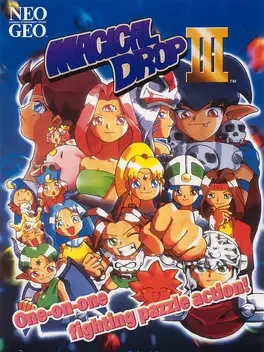
Control a clown to pull in and throw back balloons hurled from the top of the screen. If you line up three or more balloons of the same color in a vertical row, they will burst. If you're not quick enough, the balloons will squash the clown and the game is over. Once you've got the hang of bursting balloons, you'll need to master combos and chains. The third Magical Drop game, first released in 1997, was also developed for the Neo Geo. This games adds representatives for the remaining Tarot Major Arcana, as well as introducing a "daughter" Strength character that more closely resembles the traditional depiction of Strength. The game adds a third button, which allows players to add rows to their field at any time. Additionally, attacks now sends lines to the opponent in non-even rows that vary by character. Hirameki mode is replaced by Adventure Mode, which is a board game that challenges players to reach Empress before CPU-controlled rivals. The English versions of Magical Drop III remove the hardest difficulty setting in Vs. CPU Mode and rival opponents in Adventure Mode.
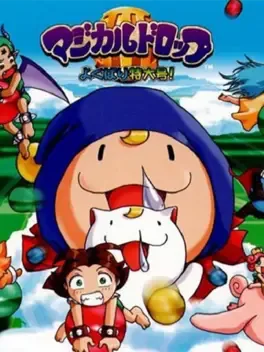
Magical Drop III was ported twice to the Sony PlayStation. The first PlayStation port, Magical Drop III: Yokubari Tokudaigou!, and features a mode that attempts to play similar to the arcade version alongside the Saturn's "special" rebalanced mode. Despite the "arcade" version visually mimicking the Neo Geo AES version (down to emulating the starting menu), there are several gameplay and graphical quirks that suggest that it is an adjusted version of the "special" mode rather than a direct port. The choice between Arcade and Special mode is given to the player immediately upon booting the game, and the system must be reset to switch.